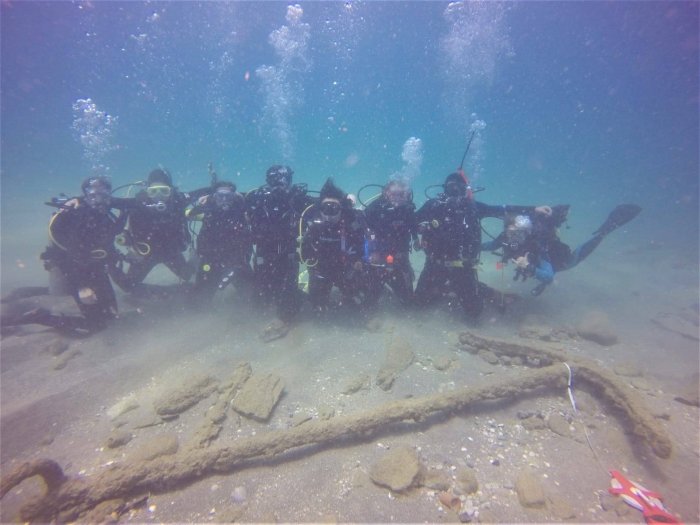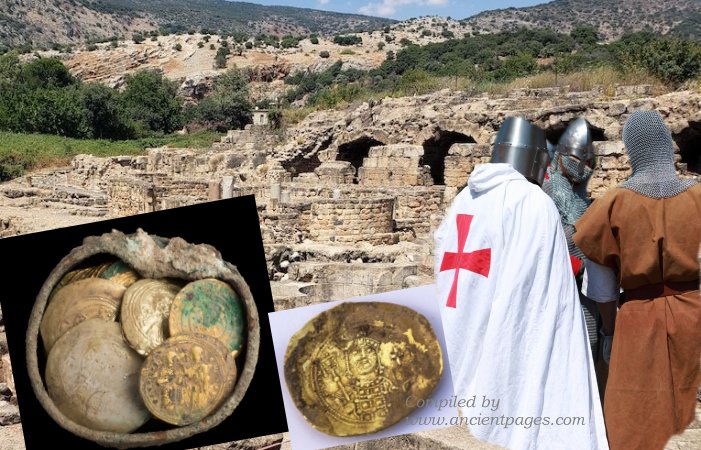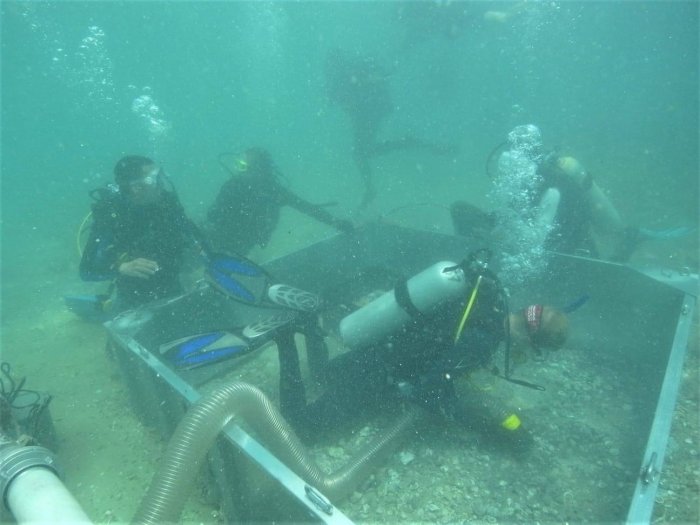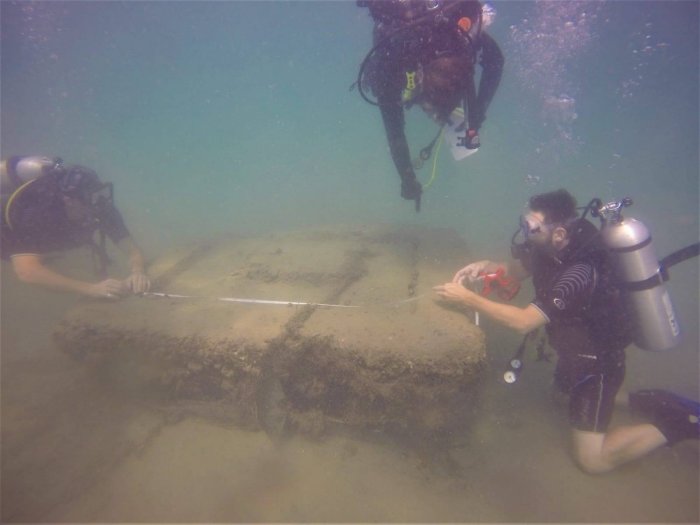Conny Waters – AncientPages.com – Caesarea, and Acre are two ancient cities in Northern Israel that provide archaeologists often with interesting discoveries.
Located between Haifa and Tel Aviv, Caesarea is a city with a history going back to the days of Herod the Great and Caesar Augustus more than 2,000 years ago. Being one of the oldest cities in the world, Acre has seen conquerors come and go over the last 4,500 years, if not more.

Recent underwater exploration in the port of Caesarea. Credit: Israel Antiquities Authority
All archaeological news from the ancient city of Caesarea and Acre is of great historical value.
As previously reported, hidden between two stones in the side of a wall, located in a house, archaeologists discovered a small bronze pot containing 24 gold coins and a 900-year-old golden earring. The coins are dated to the end of the 11th century and offer evidence of the Crusaders’ conquest of Caesarea. The Knight Templars’ victory in the year 1101 is regarded as one of the more critical events in the city’s medieval history.

Many coins from the Crusader era were previously unearthed in the region.
Some years ago, during an extensive excavation and conservation work in Caesarea conducted by the Israel Antiquities Authority and sponsored by The Edmond de Rothschild Foundation IL, archaeologists unearthed 18 Fatimid dinars that were well known from previous excavations in Caesarea where it was the standard local currency of the time. Scientists also found an extremely rare group of six Byzantine imperial gold coins. Five of the coins are concave and belong to the reign of the Byzantine Emperor Michael VII Doukas (1071–1079)
Also, in 2013, during a combined underwater expedition from the University of Rhode Island and the IAA, a large base for a statue or obelisk was uncovered in the port of Acre. The base may have once marked the entranceway into the port during the Hellenistic period under the Ottoman “Tower of Flies” lighthouse (el-Manara).

Underwater archaeologists investigating the new finds. Credit: Israel Antiquities Authority
Now, according to a press statement issued by Israel Antiquities Authority (IAA), underwater archaeologists report they have returned to investigate further and excavate the lighthouse remains. The lighthouse can be seen today near the Acre marina, jutting out above the water on a small island.

Credit: Israel Antiquities Authority
IAA marine archaeologists with volunteers uncovered additional maritime artifacts at the port of Caesarea, including a huge well-preserved anchor from a Roman ship dated to the fourth century CE. In addition, near the ship, the volunteers uncovered additional treasures weighing about one and a half tons! The ship’s cargo included chunks of raw glᴀss, stunning bronze artifacts, and coins. This is the first time in Israel that raw glᴀss cargo can be accurately dated.
See also: More Archaeology News
“We ᴀssume that the ship set sail from the Gulf of Naples, Italy, and traveled to port cities of the eastern Mediterranean, eventually docking at the port of Caesarea to load raw materials, such as glᴀss,” the scientists said.
Written by Conny Waters – AncientPages.com Staff Writer





